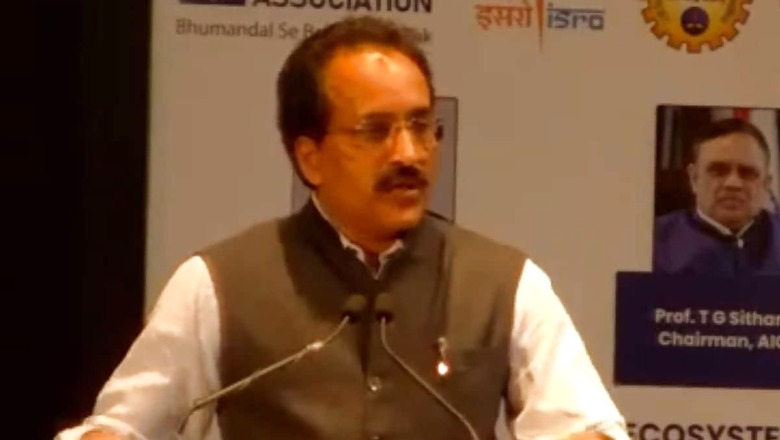
views
Marking a year of the historic landing of Chandrayaan-3 on the lunar south pole, Indian Space Research Organization (ISRO) chairman S Somanath said the country’s space sector needs more investment, and urged private companies to create additional space infrastructure.
“We have to invest more in the space sector. The amount of money that we receive for space programmes is a substantially lower percentage compared to many other nations which have full-fledged space programmes. We need to find ways to invest more in this sector,” said the ISRO chief ahead of National Space Day.
India is among the few leading space-faring countries which have strategic capabilities of building and launching satellites from its land. “We need to sustain it, thrive on it and make it more cost-effective and accessible. In the coming days, there will be questions asked on who is going to invest in the sector and what will be the return on investment. All this needs to be carefully planned out,” he added.
The ISRO chairman was in New Delhi ahead of the first anniversary of India’s historic moon landing on August 23. The landmark mission was executed with a budget outlay of just Rs 600 crores. He also launched the ‘Model Curriculum for Space Technology’ drafted by All India Council for Technical Education (AICTE). The event marked the signing of an MoU between AICTE and the Indian Space Association (ISPA) to promote higher education in the Space Industry.
‘DECISION TO GO TO MOON IN 2008 CHANGED ISRO’s COURSE’
Elaborating on ISRO’s inter-stellar pursuits, he said, it had always been a “reluctant journey” for the agency to identify space missions to go to the Moon or Mars because of the questions on its impact on economy and people’s lives.
“These were difficult choices. So, when the decision was made to go to the moon in 2008 with Chandrayaan-1, it was a very momentous occasion. Though we had been undertaking scientific missions ever since we started launching satellites, but to have a dedicated exploratory programme to the moon was very difficult. It changed the course for ISRO,” he remarked.
Launched in 2008 with just Rs 386 crore, Chandrayaan-1 marked the beginning of ISRO’s inter-planetary missions. It was also the first-ever lunar mission to discover water molecules on the Moon, which was also confirmed by remote-sensing data and in-situ experiments by subsequent missions. It was also the first time that ISRO’s impact probe hit the lunar surface.
“All the five experiments aboard Chandrayaan-3 also went very well, and we collected a lot of data, and produced important findings. But we are excited to look beyond Chandrayaan-3. There are still many areas that we need to explore,” he added.
PRIVATE SECTOR MUST BUILD SATELLITES, ROCKETS
With India’s largely government-dominated space sector now open for private enterprises, ISRO is also imploring big private businesses to invest in it. It has also declared its Small Satellite Launch Vehicle (SSLV) ready for manufacture and operational use by industries.
“We are looking for big companies that can invest in the space sector and build additional infrastructure — rockets and satellites. For that, we need to create more satellite-based services, and therefore we are looking to make over 30 years of archival remote-sensing data available to the public. This data up to the resolution of five metres can be downloaded, and used for developing space-based applications. This model is successful in other countries, and we would also like to make its best use,” he added.
Herve Delphin, Ambassador of the European Union who was also present on the occasion, said EU has brought a three-fold increase in its investment in the space sector from five billion Euros in 2007-2013 to 15 billion Euros from 2021-2027. Meanwhile, India’s space economy currently stands at around $8.4 billion, with a 2 per cent share in the global space economy. The government has set a target of bringing a five-fold increase and taking this to nearly $44 billion — 7-8 per cent of the global economy by 2033.


















Comments
0 comment